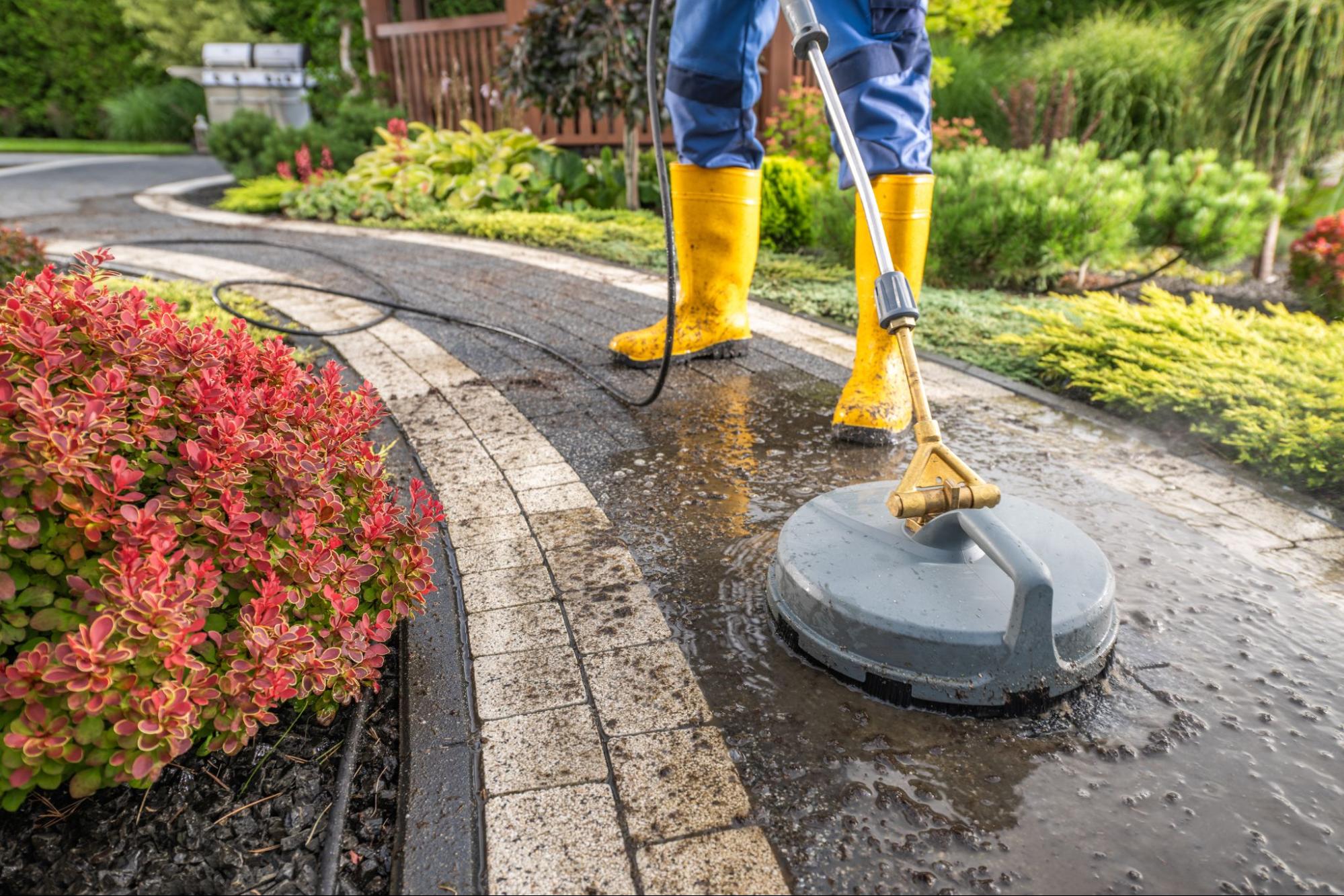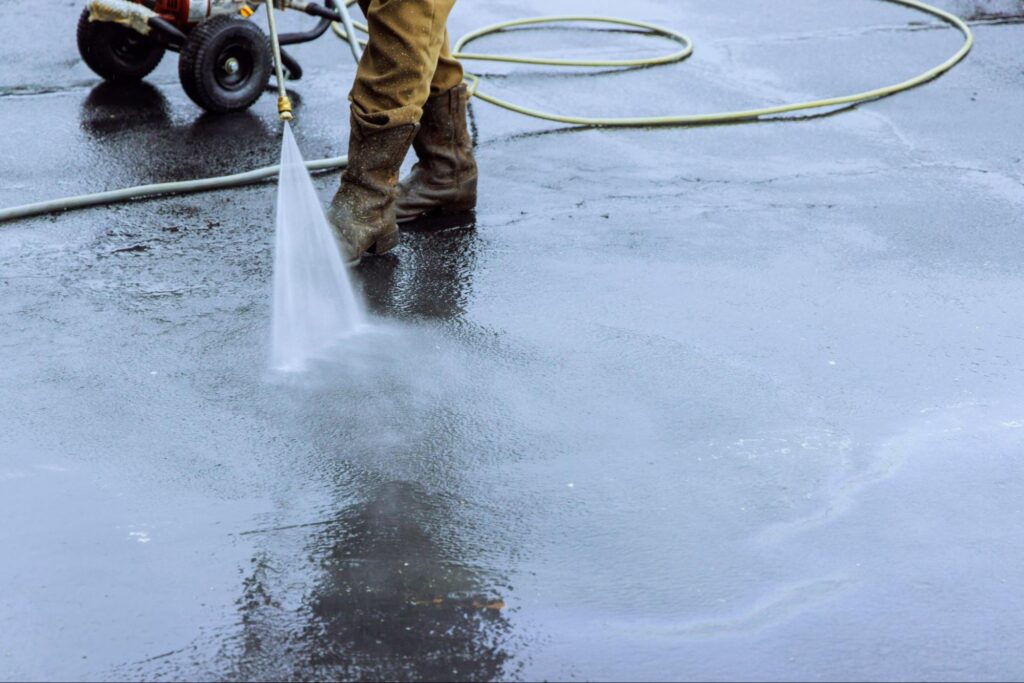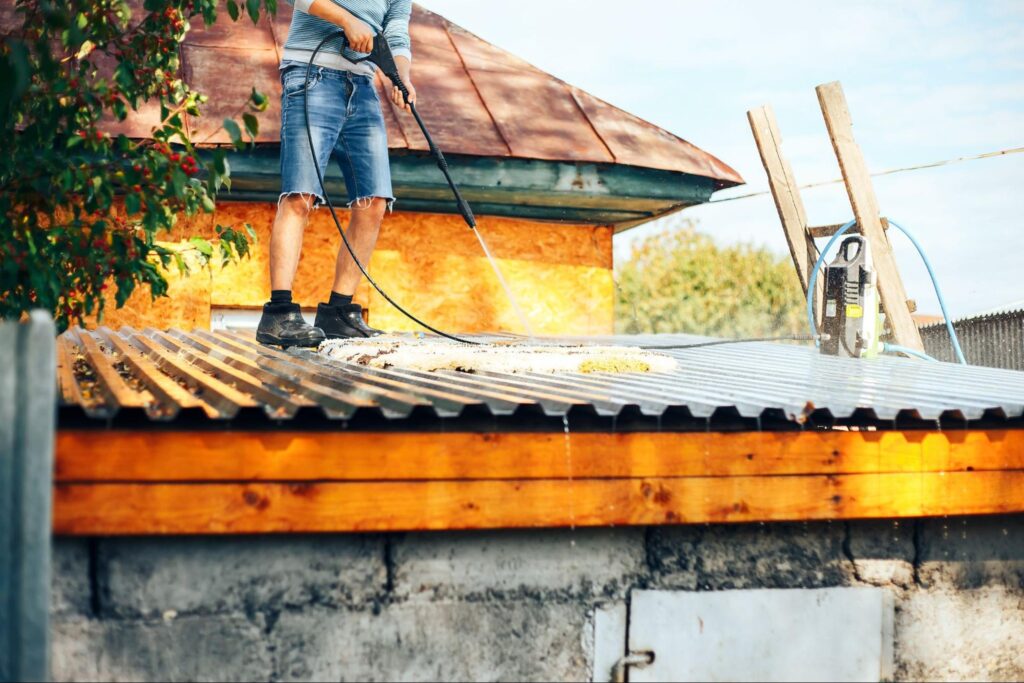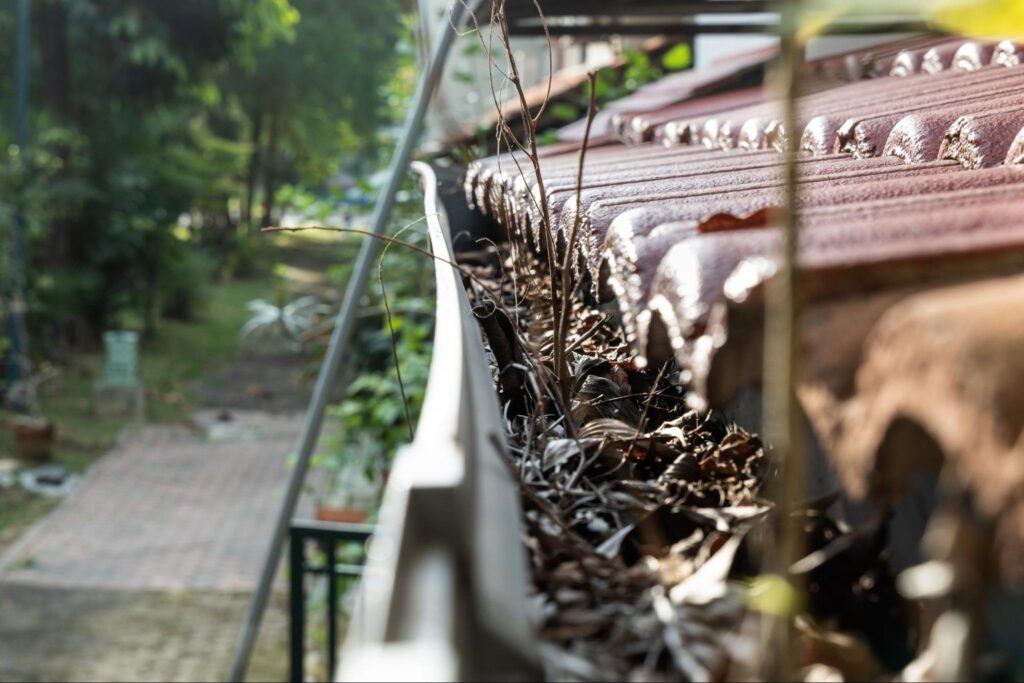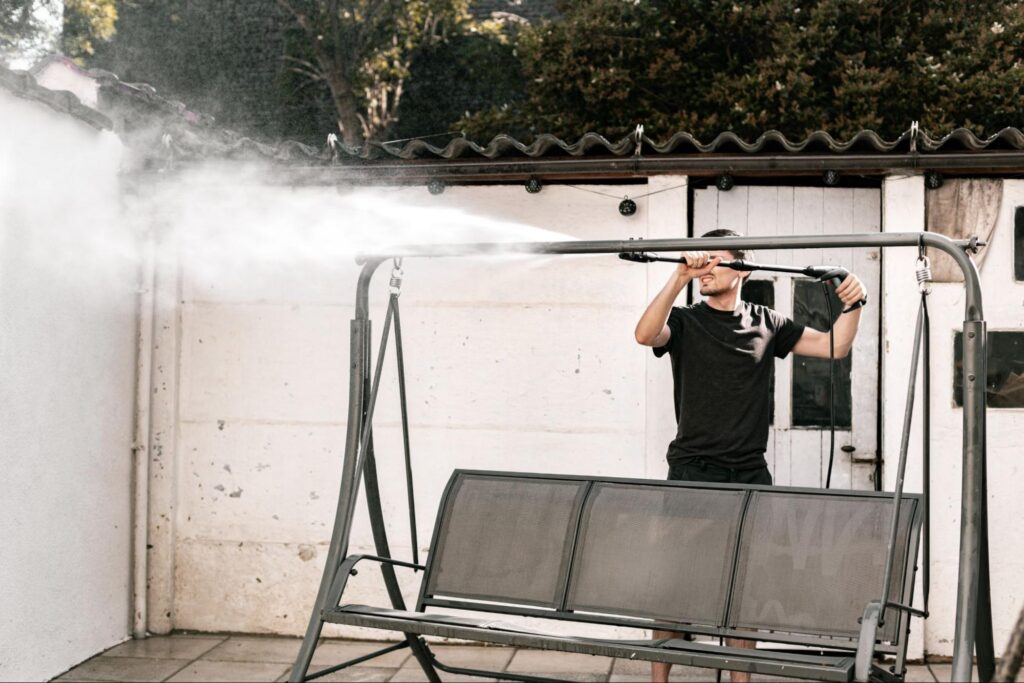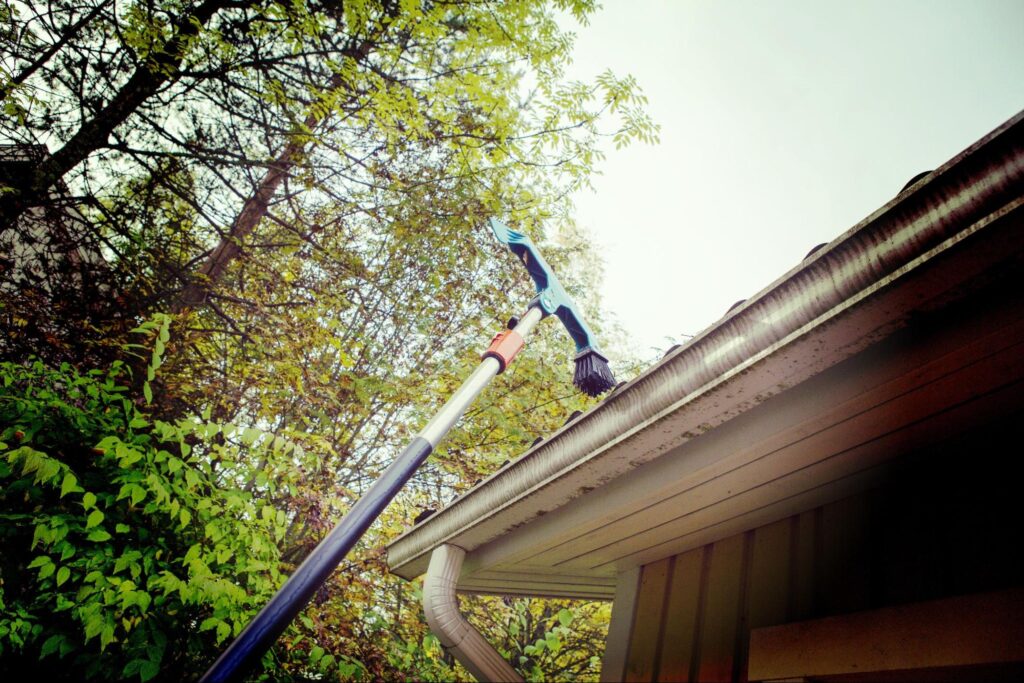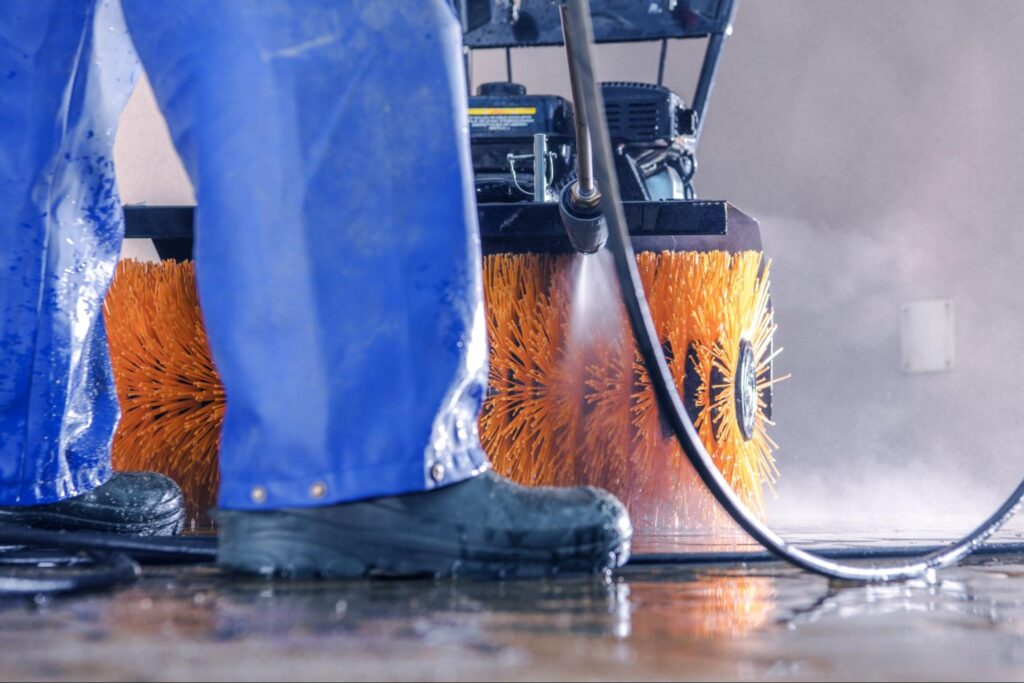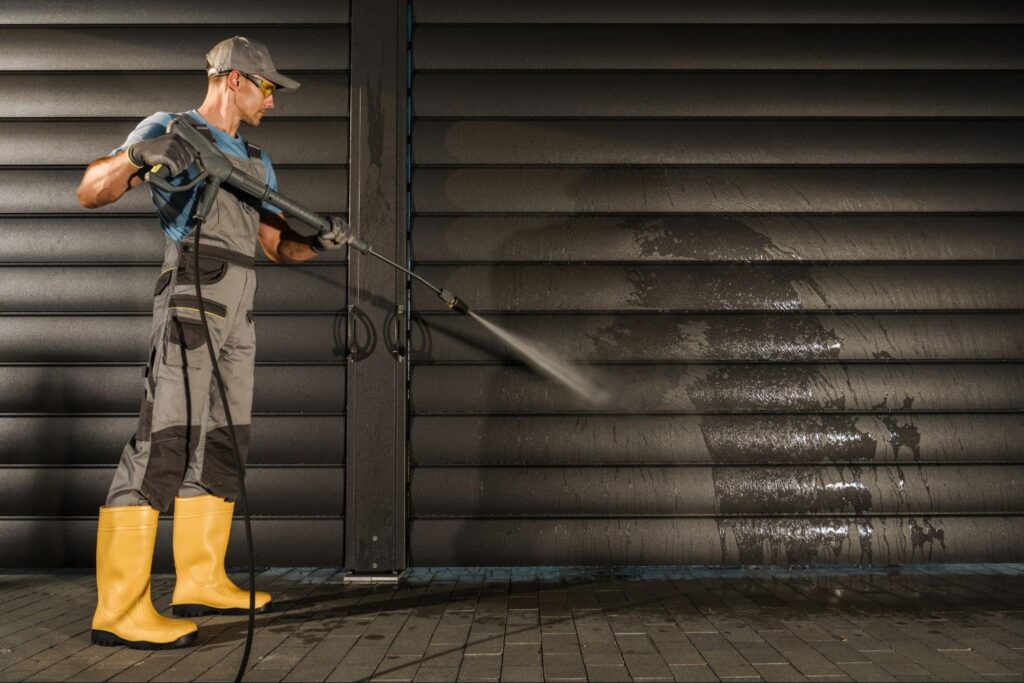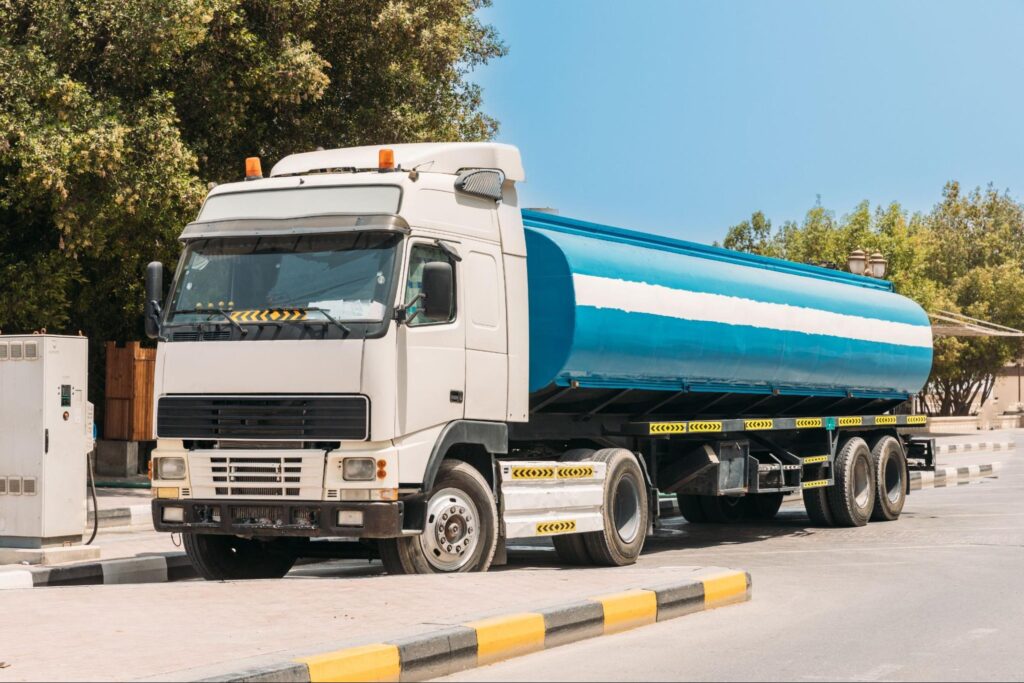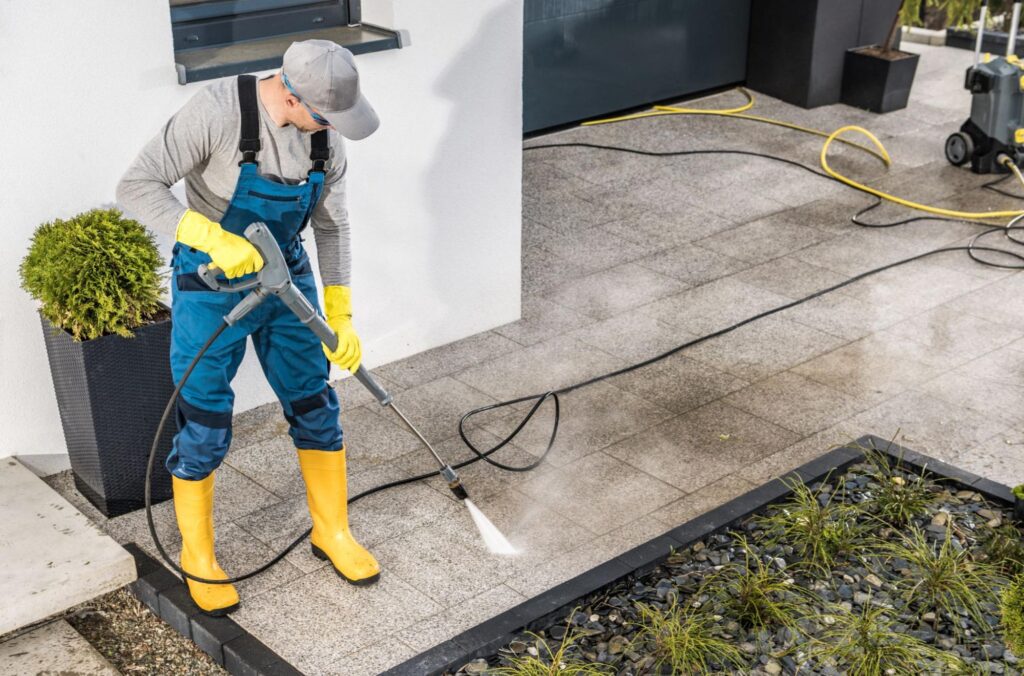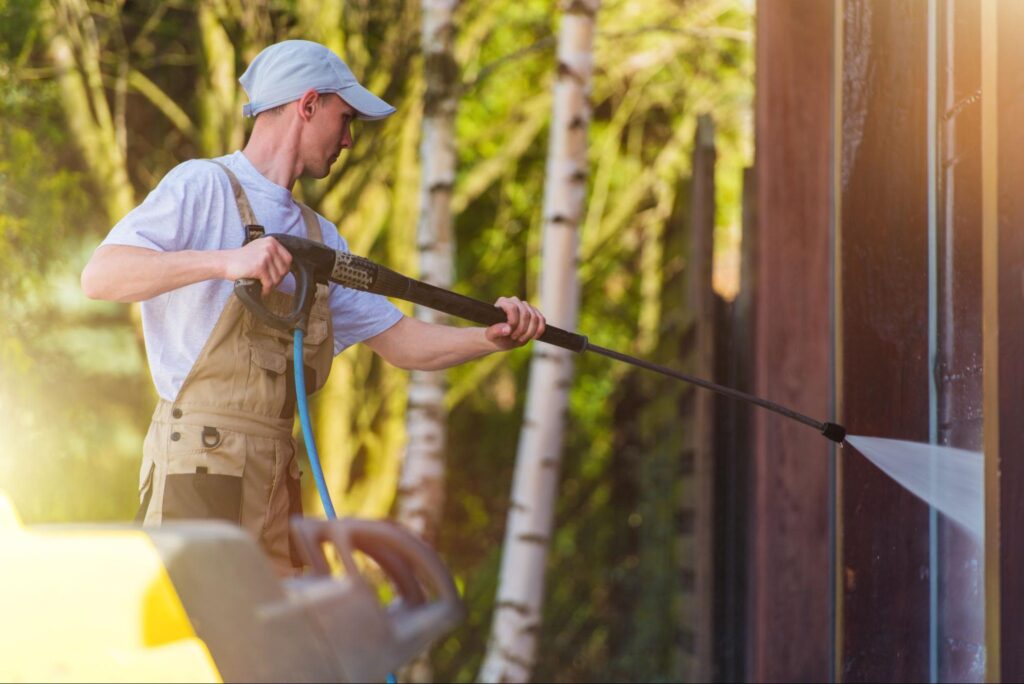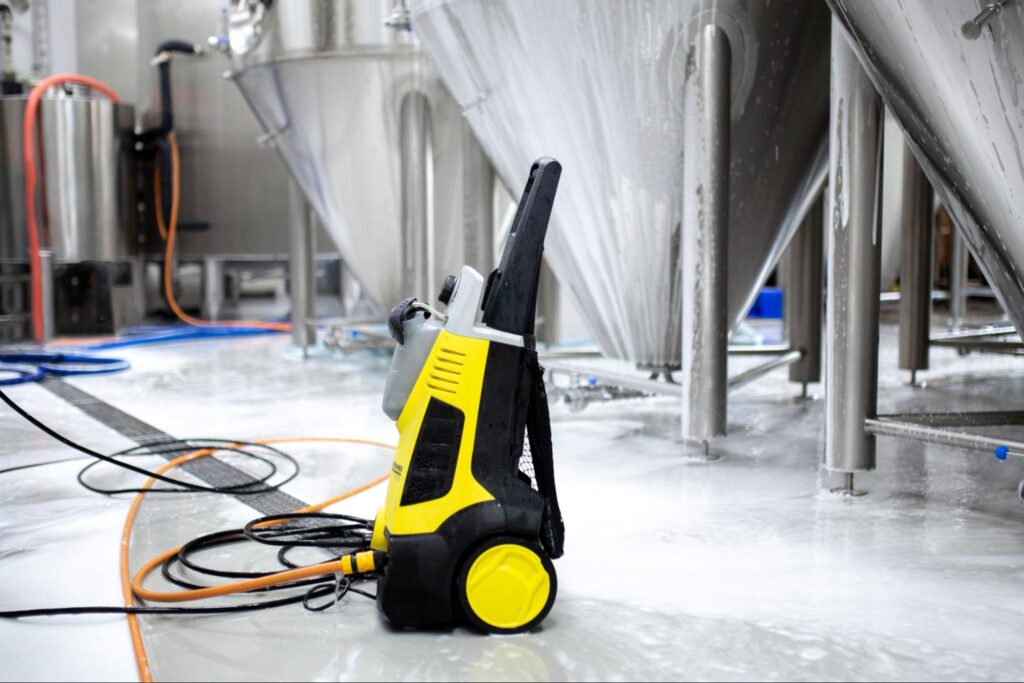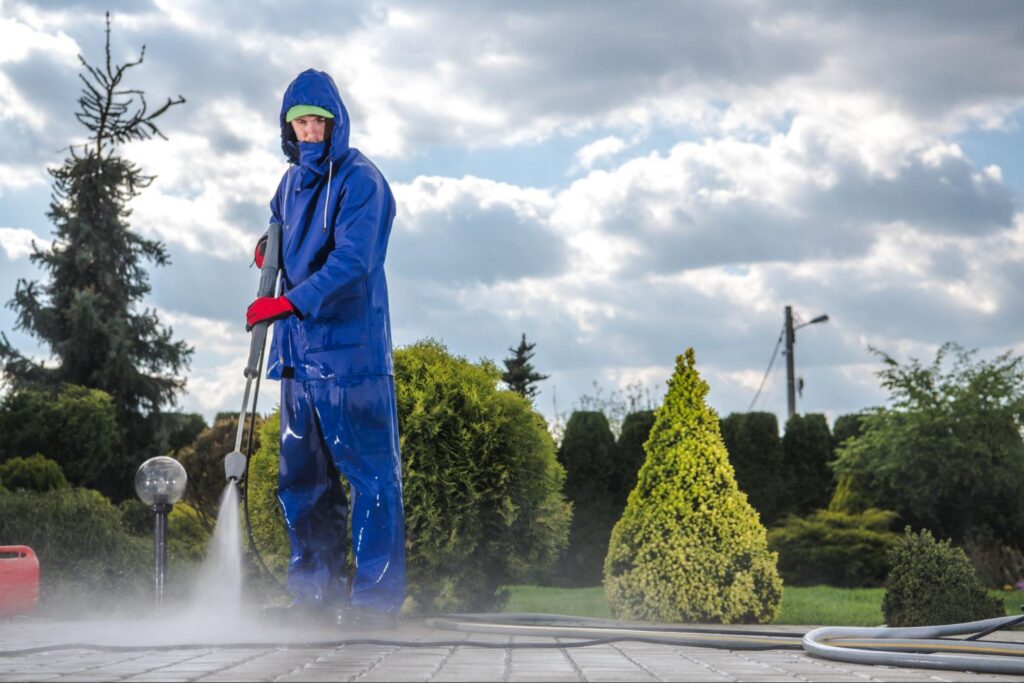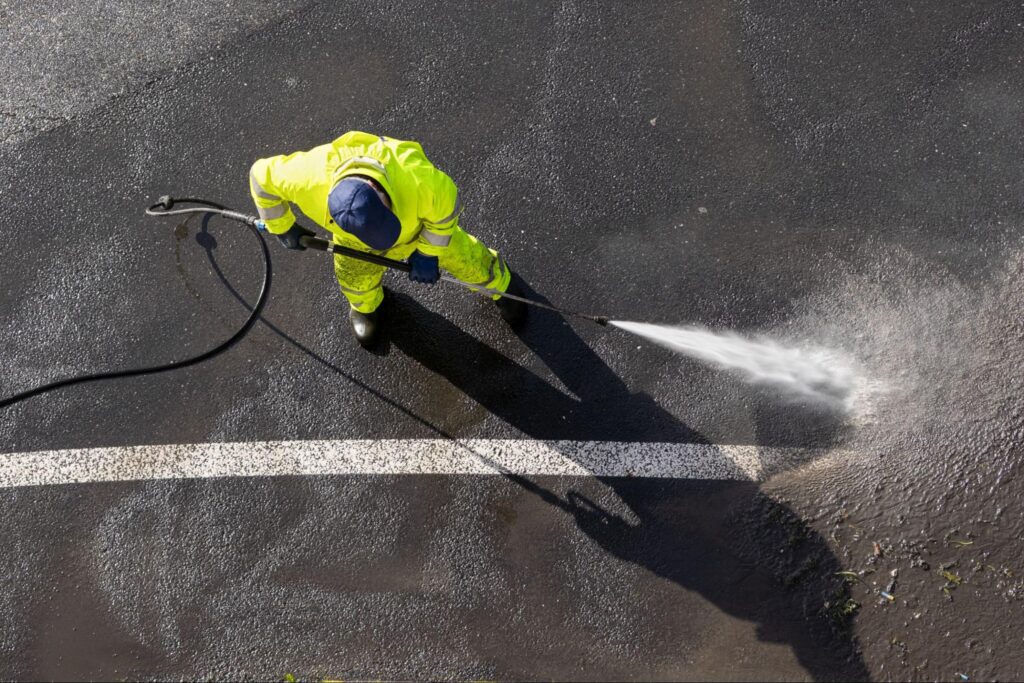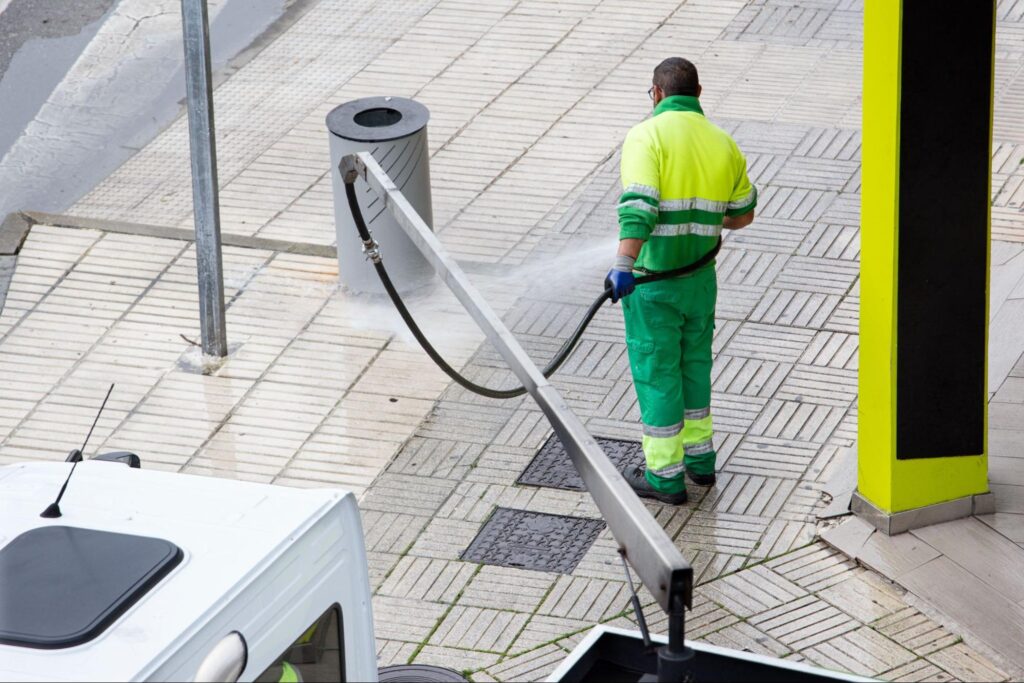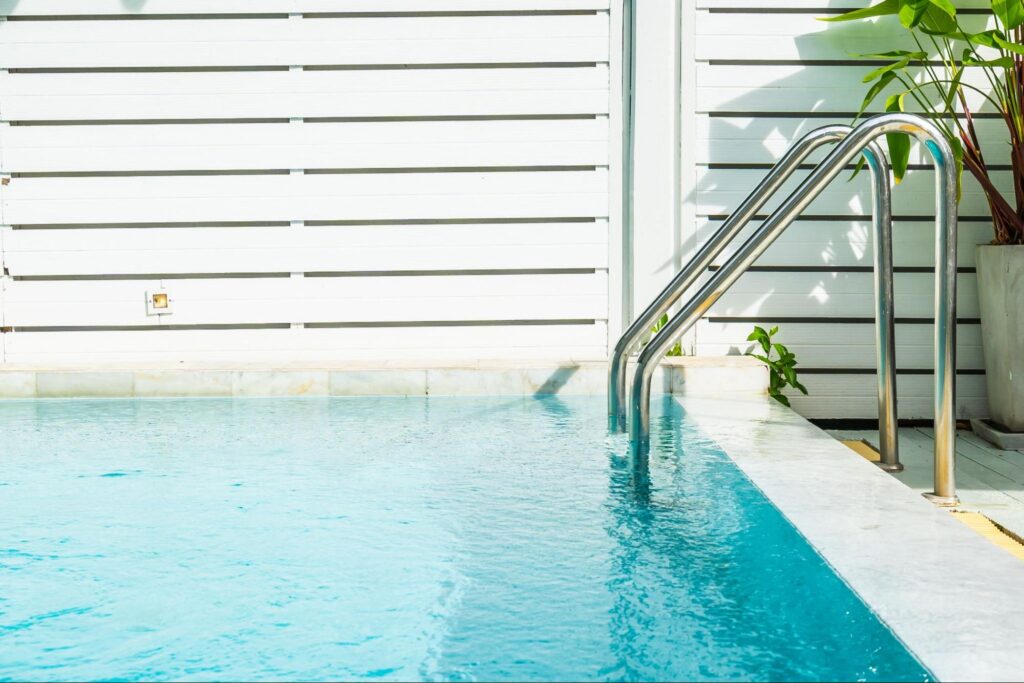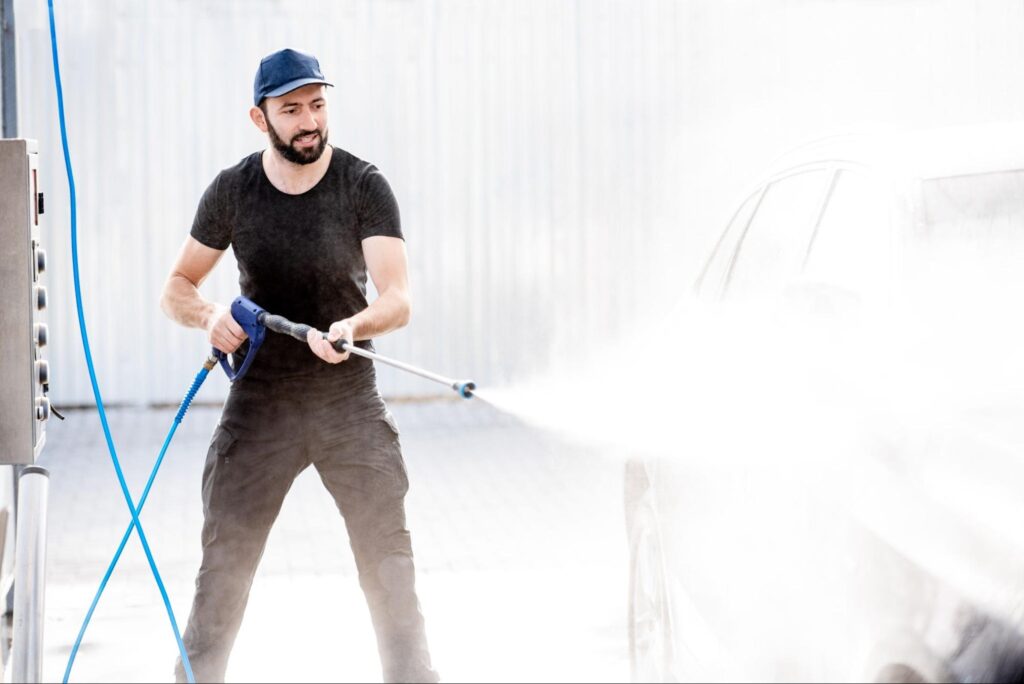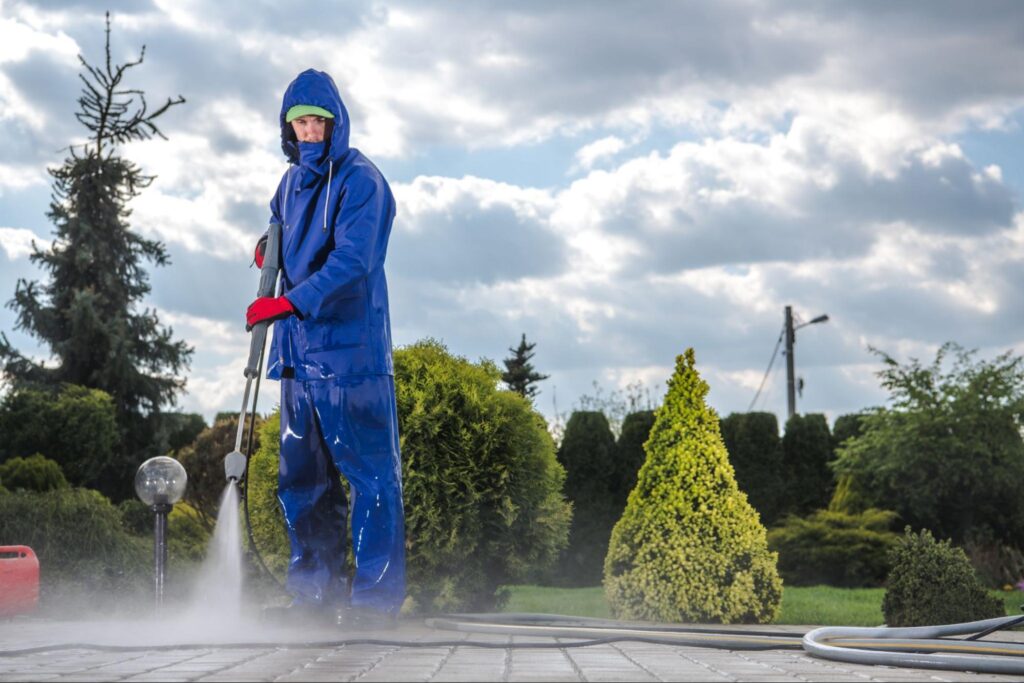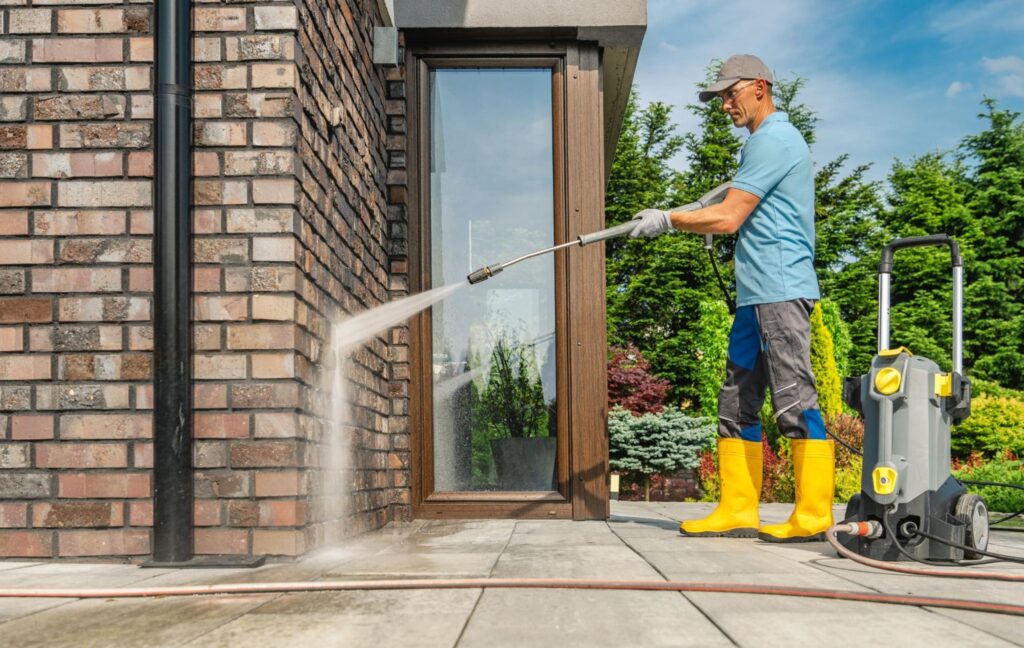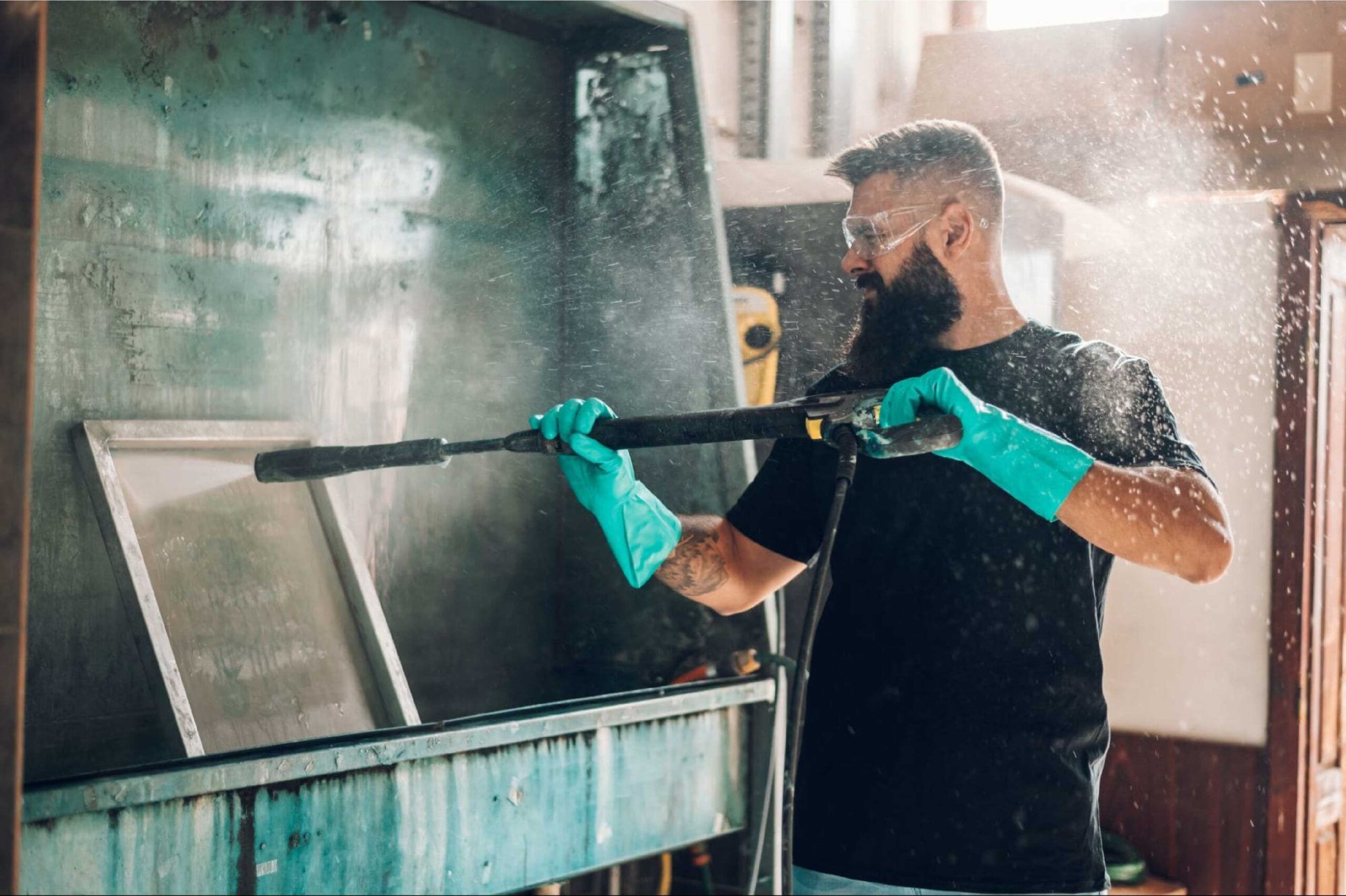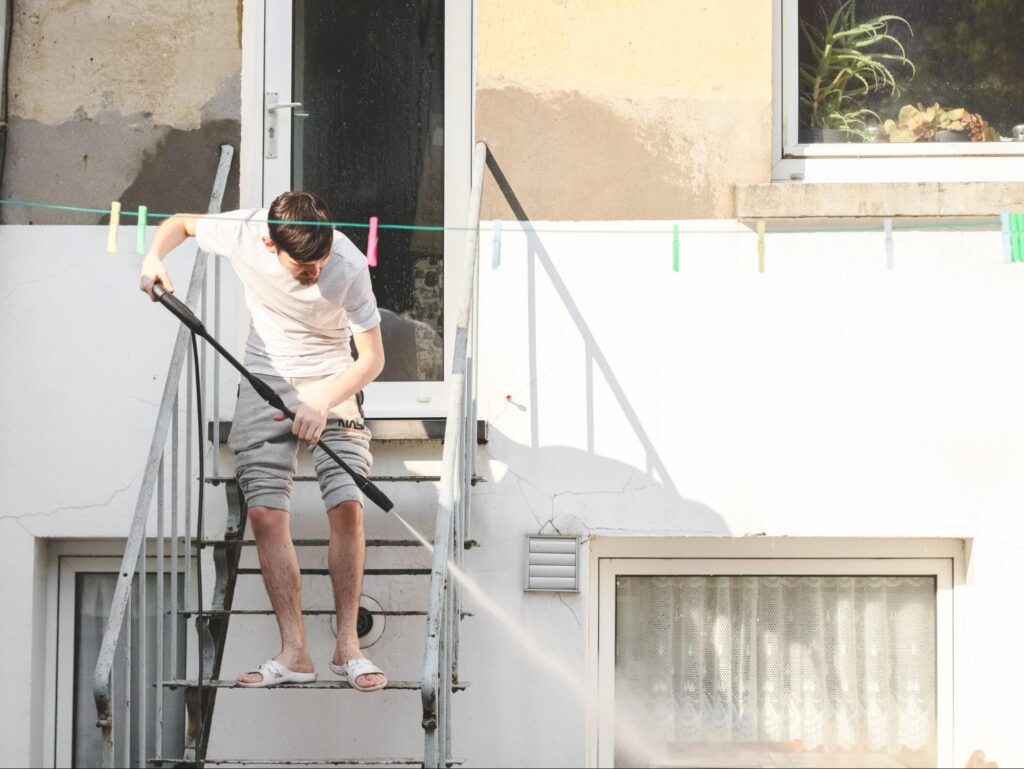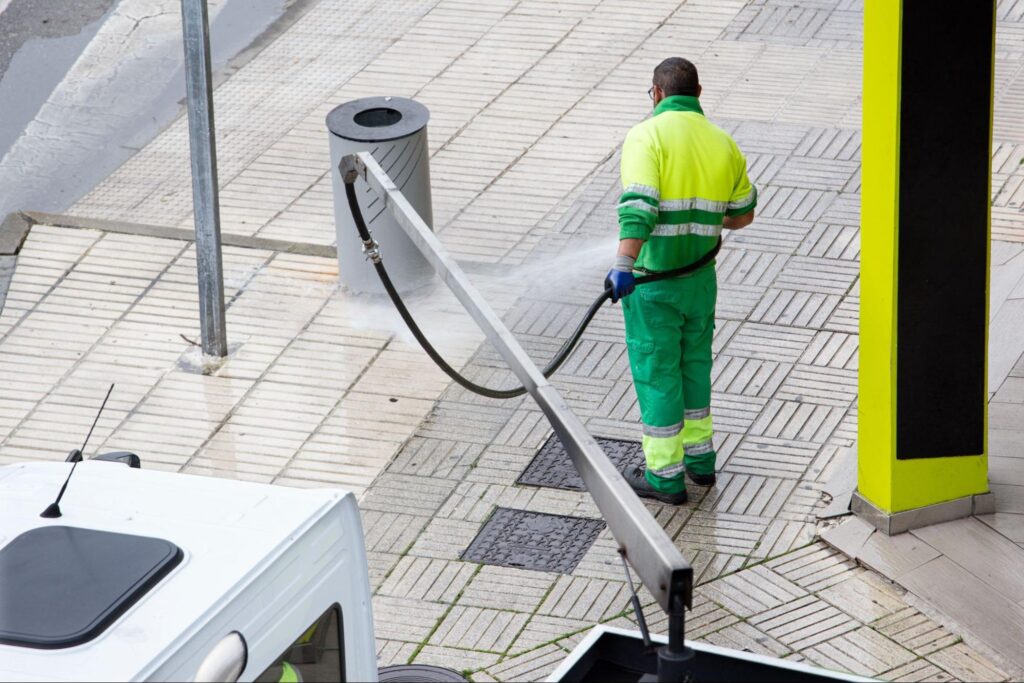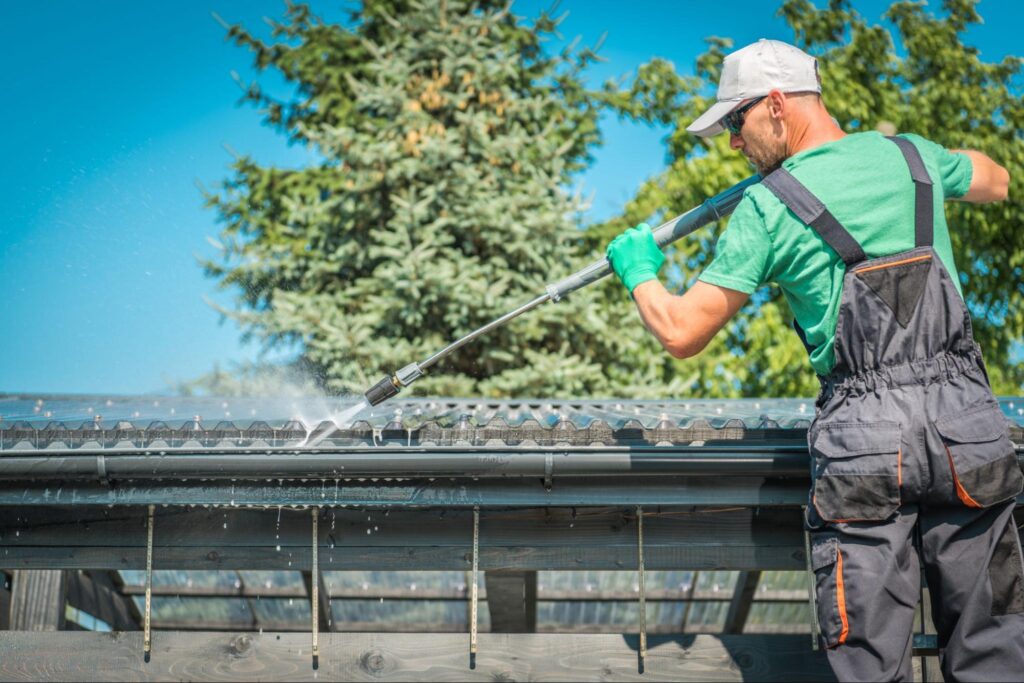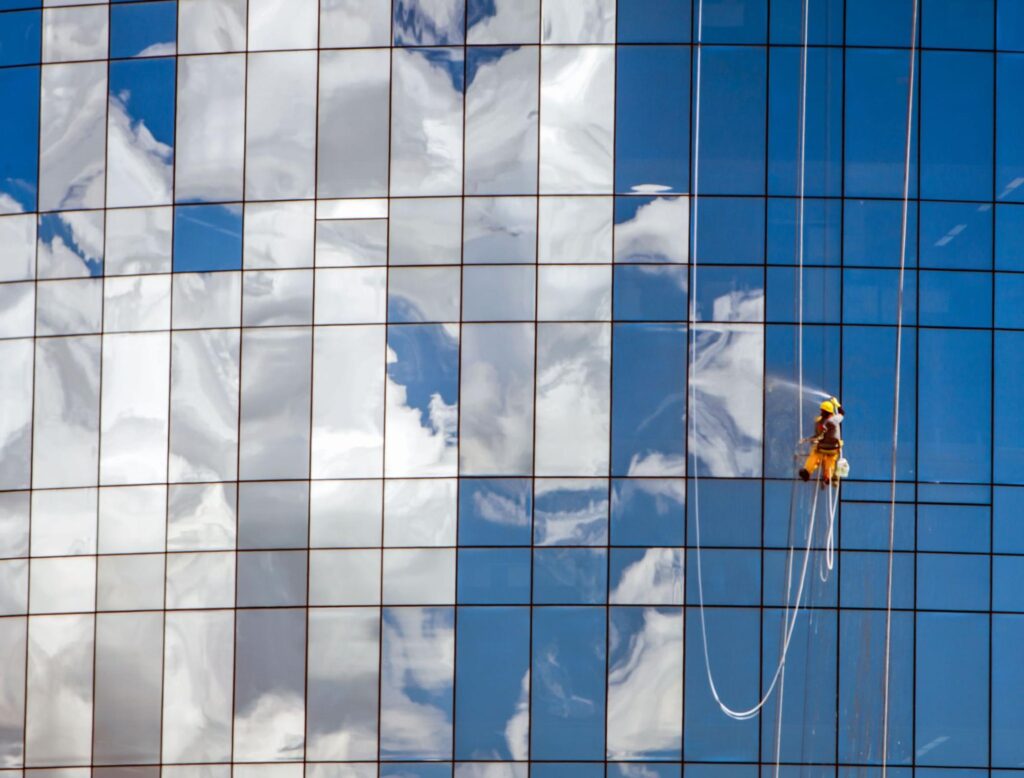What is a Pressure Washer Surface Cleaner and how Does it Work?
Pressure washing services take many forms. A pressure washer surface cleaner is a round, shrouded attachment that connects to your washer’s spray gun and glides across flat surfaces to produce an even, stripe-free finish. Inside the housing, a bar with two nozzles spins rapidly, using the machine’s water flow to sweep an even pattern. Compared with a bare wand, a pressure washer surface cleaner keeps the jet height consistent, controls overspray, and covers more area per pass, so driveways, sidewalks, patios, and garage floors clean faster with fewer visible lines.
Pressure Washer Surface Cleaner Anatomy and Motion
The core pieces are simple: a rigid deck or shroud, a swivel that lets the internal bar spin, and a spray arm outfitted with matched nozzles. As pressurized water enters, the nozzles propel the arm in a tight circular path, distributing energy uniformly across the cleaning width. The skirt around the shroud contains overspray, protecting adjacent landscaping and walls. Because the jets maintain a fixed distance from the surface, a pressure washer surface cleaner reduces the risk of etching concrete or gouging softer materials when compared with slow, uneven wand work.
Advantages of a Pressure Washer Surface Cleaner Over a Wand
On large slabs, a wand’s narrow fan pattern tempts users into overlapping passes that leave tiger stripes. A pressure washer surface cleaner eliminates that inconsistency by blending the pattern as it spins. Productivity climbs because a 12–20 inch head can replace dozens of wand strokes, and quality improves because the skirt minimizes blowback that would otherwise re-dirty the panel you just cleaned. With less wandering spray, cleanup goes faster, and nearby windows, doors, and beds stay cleaner too.
Pressure Washer Surface Cleaner Sizing for Your Machine
Right-sizing ensures the arm spins briskly and the nozzles deliver the correct impact. A short primer helps, then the details matter.
Know Your Flow Rate
Gallons per minute drive rotation speed and rinsing power, so match the head to the machine’s flow.
Pick the Correct Diameter
Smaller heads suit compact washers, while larger decks need more water to keep the bar at speed.
Balance PSI and Nozzle Orifice
The nozzle size controls pressure at the tips and must be chosen for your washer’s output.
Pressure Washer Surface Cleaner Technique for Crisp, Even Results
Technique turns a good tool into a great outcome. Start by pre-rinsing loose dirt, then make smooth, overlapping lanes at a walking pace, letting the spinning bar lift the embedded grime instead of forcing it with extra downward pressure. Keep the deck parallel to the slab and avoid tilting, which concentrates the jet on one edge. After the cleaning pass, a quick wide-fan rinse with the wand clears residues from joints and expansion cuts. Used this way, a pressure washer surface cleaner leaves a uniform, low-streak finish that dries without rings.
Concrete, Pavers, and Decking with Pressure Washer Surface Cleaner
Different materials benefit from minor adjustments in approach. A few guidelines keep finishes safe while delivering strong results.
Concrete Likes Steady Pace
Maintain consistent speed and allow a final rinse to carry lifted fines out of low spots.
Pavers Need Gentler Handling
Use modest pressure and protect joint sand with a lighter pass plus a careful follow-up rinse.
Wood and Composites Demand Caution
Reduce pressure and keep the head moving so softer fibers are not raised or scarred.
Pressure Washer Surface Cleaner Chemistry, Heat, and Stains
Water pressure alone handles dust and light algae, but chemistry expands what you can remove at lower risk. Applying a cleaner formulated for the surface allows contaminants to soften, so the spinning jets need less force. On greasy driveways, a degreaser plus warm or hot water from a compatible washer accelerates results while reducing the chance of wand marks later. Rinse thoroughly: a pressure washer surface cleaner lifts the film, but the final flush prevents residue from drying into faint halos.
Mistakes with a Pressure Washer Surface Cleaner to Avoid in the Field
A few common pitfalls cause streaks, slow spins, or damage. Trim them out of your routine, and the tool shines.
Moving Too Fast
If you outpace the spray arm, soils remain, and faint arcs appear under changing light.
Ignoring Clogged Nozzles
Uneven spray breaks the pattern and can score a path if one jet carries all the load.
Skipping the Rinse
Detergent and fines settle back into pores unless you finish with a clean water flush.
Care, Storage, and Longevity of a Pressure Washer Surface Cleaner
Routine maintenance is minimal and pays off quickly. Rinse the head after each job, check the spray tips for wear, and spin the arm by hand to feel for roughness in the swivel. Replace worn O-rings before leaks reduce performance. Stow the tool dry and avoid stacking heavy gear on the shroud to keep it accurate. With occasional nozzle swaps and a fresh swivel when needed, a pressure washer surface cleaner will stay balanced, efficient, and ready for extended cleaning sessions.
Keep Tips Matched
Replacing both nozzles together preserves balance and consistent rotation speed.
Protect the Swivel
Grit shortens bearing life, so flush before storage and cap the inlet between jobs.
Mind the Skirt
A torn skirt throws water and leaves edges messy; replace it to keep overspray contained.
Pressure Washer Surface Cleaner Safety and Site Preparation
A clean result starts with a safe setup. Clear the work area of toys, hoses, and loose stones that could jam the arm or fling outward. Ensure that nearby doors and windows are closed, and protect delicate plants that might not tolerate high pH cleaners. Keep feet planted and avoid tipping the head on raised edges or uneven slabs. Because a pressure washer surface cleaner conceals the jets, never reach beneath the shroud while the system is running, and shut down before inspecting anything on the deck.
When DIY Pressure Washer Surface Cleaning Makes Sense and When Pros Win
Homeowners can achieve excellent outcomes on modest driveways and patios with a correctly sized head, a compatible washer, and patient technique. Larger lots, deep oil staining, and second-story balconies often justify calling a professional crew equipped with higher flow, heated systems, and wastewater controls. If you face surfaces that are delicate, coated, or historically significant, a specialist’s testing process and low-pressure chemistry approach may save finishes while still restoring color and traction.
Pressure Washer Surface Cleaner for Faster, Cleaner Flats
The tool answers a simple problem—how to clean big, flat surfaces quickly without stripes—by fixing the jet height and blending the spray. Choose a size that your machine can spin with authority, lean on chemistry to lower risk, and move at a measured pace with a final rinse. With a well-kept pressure washer surface cleaner and a thoughtful plan, you’ll reclaim concrete and pavers efficiently, avoid etched arcs and overspray, and finish with a uniform surface that looks professionally washed.
Visit the A Plus Power Cleaning blog to learn more about pressure washing surface cleaner.
Recent Post
-
The Difference Between Street Cleaning and Parking Lot Cleaning Services
-
Roof Pressure Washing vs. Soft Washing: Which Is Better for Your Home?
-
The Best Time of Year to Schedule Gutter Cleaning Services
-
Why DIY Pressure Washing Can Damage Your Property
-
Manual vs. Powered Gutter Cleaning Tools: Which Works Best?
-
The Science Behind Industrial Pressure Washer Power and Efficiency
-
How a Commercial Pressure Washer Helps Maintain Commercial Properties
-
Water Delivery for Pools: What Homeowners Should Know Before Filling
-
Why Homeowners Trust Local Pressure Washing Companies
-
How Often Should You Schedule House Pressure Washing?
-
How Modern Technology Improves Pressure Washing Equipment Performance
-
What to Expect When You Call a Pressure Wash Business
-
The Step-by-Step Process of Professional Parking Lot Cleaning
-
How a Commercial Surface Cleaner Helps Maintain Sidewalks and Parking Lots
-
Why More Homeowners Rely on Pool Water Delivery Services
-
How a Gutter Cleaner Helps Protect Roofs and Foundations
-
The Difference Between DIY and Professional Pressure Wash Services
-
What Pressure Washer Companies Do and Why You Need Them
-
Pressure Washing vs. Soft Washing: Which Is Right for Your House?
-
Top Industries That Rely on Industrial Pressure Washing
-
The Benefits of Using a Pressure Washer for House Exteriors
-
The Difference Between Residential and Commercial Pressure Washing
-
What Is a Pressure Washer Surface Cleaner and How Does It Work?
-
The Importance of Regular Gutter Cleaning for Home Maintenance
-
How Weather Conditions Affect High Rise Window Cleaning
-
What Pressure Washing Equipment is Needed for Residential Spaces?
-
What Pressure Washing Equipment is Needed for Residential Spaces?
-
Best Times for Driveway Pressure Washing
-
Pressure Wash vs. Power Wash: What's the Difference?
-
How Often Should You Invest in Roof Gutter Cleaning?
-
Best Pressure Washing Company Near Me in Austell, GA
-
Top Power Wash Company Near Me in Chamblee, GA
-
Top Powerwash Company Near Me in Atlanta, GA
-
Top Pressure Cleaning Companies Near Me Austell, GA: A Plus Power Cleaning
-
Top Pressure Washing Companies Near Me Chamblee, GA: A Plus Power Cleaning
-
Top Pressure Cleaning Companies Near Me Atlanta, GA: A Guide to Power Cleaning Services
-
Best Electric Pressure Washer in Atlanta
-
How Much Does Roof Cleaning Cost in Marietta, GA and Atlanta, GA?
-
How Much Does Pressure Washing Cost in Georgia?
-
What is the Difference Between Power Washing and Pressure Washing



